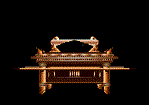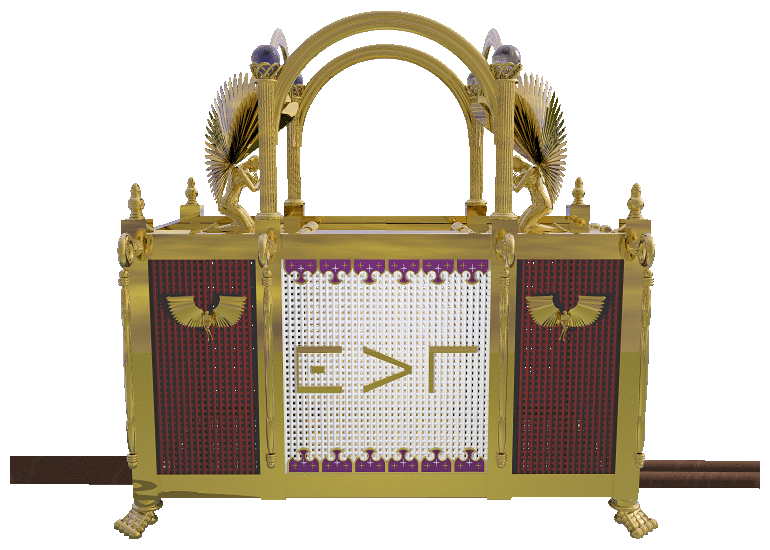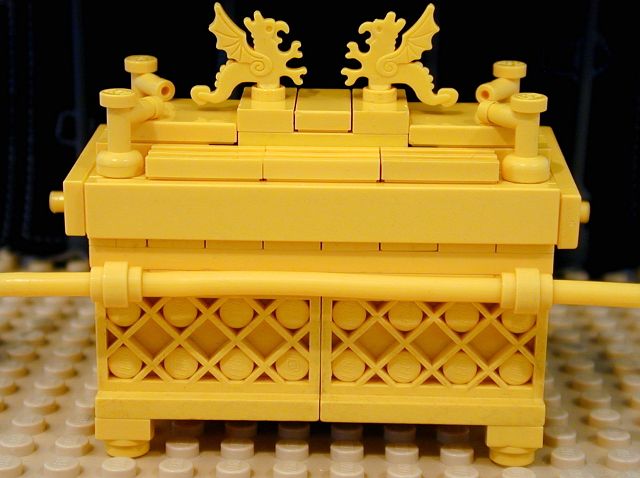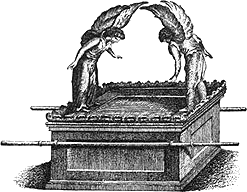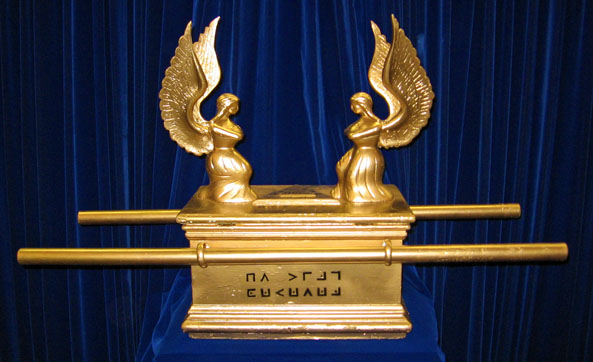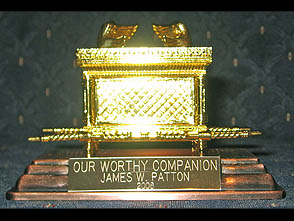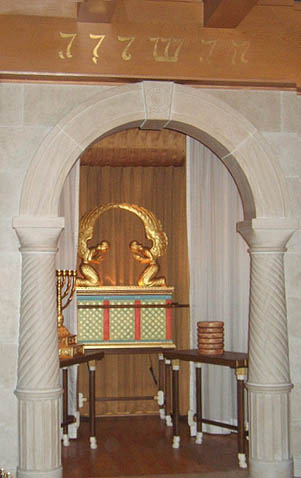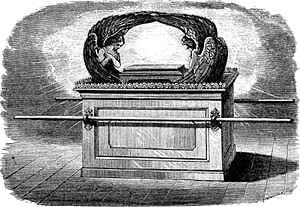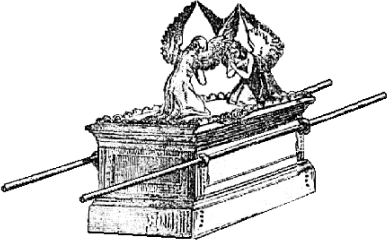The Ark of The Covenant
The Golden Vessel of G-d’s Commandments
The Ark of the Covenant (in Hebrew: ארון הברית, transliterated as aron hab'rit) was crafted by B’tzalel (in Hebrew: בְּצַלְאֵל, alternatively transliterated as Bezalel), in conjunction with his architecture of the Tabernacle. B’tzalel and his assistant, Aloliab built the Ark, per G-d’s specifications, from acacia wood, and overlaid it within and without, with pure gold. The Ark measured two and one-half cubits in length, one and one half cubits in breadth and height.* It had on the side two rings of gold, through which were kept staves of acacia wood by which it was born by the Levites when necessary. See Exodus 25-37. According to Capitular Masonic ritual, the sides of the Ark bore geometric characters which are explained in the supreme degree of Holy Royal Arch Mason.
Its cover was made of pure gold, over which were placed two golden cherubim (the ninth order of angels) with extended wings. The covering of the ark was called Kaphiret, from kaphar, to forgive sins, and hence its English name of ‘mercy seat,’ as being the place where the intercession for sin was made. See Exodus 25.
The purpose of the Ark was to serve as a container for the Decalogue, the pair of stone tablets on which G-d inscribed the Ten Commandments. Accordingly, the second Decalogue were placed in the Ark. Per Talmudic tradition, the Ark also contained the shattered remains of the original Decalogue destroyed by Moses in his fit of rage at seeing the golden calf made by his people at the foot of Mount Saini. See The Pentateuch and Haftorahs: Hebrew Text, English Translation and Commentary, by Rabbi Joseph H. Hertz, PhD, CH, Chief Rabbi of the British Empire (1939).
The Ark also contained, for a time, other items. At Exodus 16:32-34, per Moses’ instruction, Aaron placed a golden jar of manna with the Law to commemorate the Israelites’ wandering through the wilderness. At Numbers 17:25 or 17:10 (depending upon the version), per G-d’s instruction, Moses placed Aaron's rod with its blooms and almonds, in front of the Ark as a warning to rebels not to defy Moses and Aaron again. According to Hebrews 9:4, these items were placed within the Ark. Nevertheless, they were apparently removed at some point, as the only contents of the Ark at 1 Kings 8:9 were the Decalogue tablets. In the supreme degree of Holy Royal Arch Mason, Masonic tradition informs us that a decryption key was also in the Ark to decipher the characters on the Ark.
The Ark is an important element in the capitular and cryptic degrees of Freemasonry, and is used in the ritual of the degrees of Most Excellent Master, Holy Royal Arch Mason, and Select Master. Click here to see our own Ark, used in the rituals by La Fayette Chapter and Chicago Council.
A small model of the Ark of the Covenant features prominently on the N. Tracy Walker Award, presented by La Fayette Chapter No. 2 to no more than one Royal Arch Mason per year in recognition of that man’s contributions to capitular Freemasonry in Illinois and/or to our chapter.
* The cubit was an imprecise and varying measure, derived from a human forearm. The Israelites, having just left Egypt, may have been using the Egyptian so-called “royal cubit” which measured between 523.5 mm and 524 mm (20.61 to 20.63 inches). Alternatively, at the time of the First Temple (i.e., Solomon’s), the Israeli cubit was equivalent to 428.1 mm (16.9 inches). Accordingly, the width of the Ark may have been in the range of 1.07025 to 1.310 metres (3' 6.1" to 4' 3.6"), with its breadth and height in the range of 642.15 to 786 mm (2' 1.3" to 2' 6.9"). Of course, the measurement might refer to the cubit in use at the time when Exodus was written in its present form.
